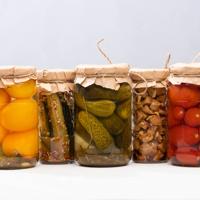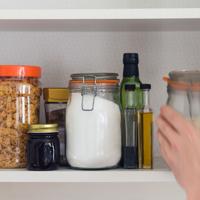Long-Term Food Storage
Discover various methods and tips for effectively storing food long-term, ensuring you and your family are prepared for emergencies.
When planning for emergencies, one cannot overlook the significance of having a reliable long-term food storage system. Being prepared with a sustainable food supply can provide valuable peace of mind, ensuring that you and your family have essential nutrition when unexpected events occur.
While there are many methods and options for long-term storage, it's worth exploring some of the more practical aspects, supported by cautious consideration and research. This guide will offer a thorough walkthrough, helping you to make informed decisions about your long-term food storage plans.
Understanding Shelf Life
Shelf life for food varies widely depending on the type of food and storage conditions. Generally, dried goods such as beans, rice, and pasta have longer shelf lives, often extending years if stored correctly. Canned goods, meanwhile, can last a number of years due to their airtight packaging. Freeze-dried products also offer extended longevity and retain nutritional value effectively.
Experts often suggest rotating your stock, meaning you consume the oldest items first to ensure nothing goes bad, and continuously replace them, maintaining a fresh inventory.
Methods of Preservation
1. Canning
Canning is a well-respected method where food is placed in airtight containers and subjected to heat to kill any bacteria. Glass mason jars are commonly used in this process. Although home canning requires some equipment and practice, it can be a worthwhile skill to learn.
2. Dehydrating
Dehydrating removes moisture from food, significantly extending its shelf life. Dehydrators can be a sound investment for those serious about food preservation. Fruits, vegetables, and meats can be dehydrated, making them easy to store.
3. Freeze-Drying
Freeze-drying involves freezing the food and then reducing the surrounding pressure to allow the frozen water in the food to sublimate directly from the solid phase to the gas phase. While this method can be costly, companies offer a variety of freeze-dried options that are ready to purchase, such as meats, vegetables, and even full meals.
4. Vacuum Sealing
Vacuum sealing removes air from the packaging and seals it tightly to prevent spoilage. This method is great for maintaining freshness and can often be used in conjunction with other methods like freezing or refrigeration for foods like meats and cheeses.
Choosing the Right Storage Space
Where you store your food is equally critical. A dry, cool, and dark environment is optimal for most goods. Avoid places with high humidity or fluctuating temperatures, as these conditions can accelerate spoilage.
Basements, pantries, or dedicated food storage rooms can serve as great spaces for your supplies. Always monitor the area for potential pest issues and consider investing in pest-proof containers if necessary.
Nutritional Balance and Variety
When building your long-term food storage, strive for a balanced diet. While it's tempting to stock up solely on non-perishable staples, integrating a variety of food groups can offer more nutrition and prevent diet fatigue.
Include:
- Proteins: Beans, lentils, canned meats, and nuts
- Carbohydrates: Rice, pasta, oats, and quinoa
- Fats: Oils, nut butters
- Fruits and Vegetables: Freeze-dried or canned versions
Portioning and Planning
Estimate the food requirements for each member of your household. The USDA suggests that an adult consumes roughly 2000-2500 calories a day, so tailor your storage based on these numbers, adjusting for age, gender, and activity level.
Additional Resources
For those who are eager to dive deeper, several resources and books are available to guide you through this journey. "The Prepper’s Cookbook" by Tess Pennington and "The Provident Prepper: A Common-Sense Guide" by Kylene and Jonathan Jones are both great starting points.
Conclusion
Long-term food storage is as much about strategy and planning as it is about stockpiling. Each choice and method can contribute to a more fortified and prepared home, providing a sense of security in times of need.
As with any preparedness strategy, remain adaptable and willing to learn from experiences. Share insights and knowledge with your community since everyone benefits from enhanced preparedness. Remember, preparedness is not just about surviving; it is about thriving through challenges with confidence and assurance.

Learn about the best foods to store for emergencies, ensuring you’re prepared for any situation.

Explore various techniques for preserving food, from dehydration to fermentation, to ensure you have nutritious options available during emergencies.

Learn practical techniques for storing grains long-term to ensure freshness and nutritional value, making your emergency food reserves reliable.

Learn effective vacuum sealing techniques to extend the shelf life of your food supplies, ensuring you're always prepared for emergencies.